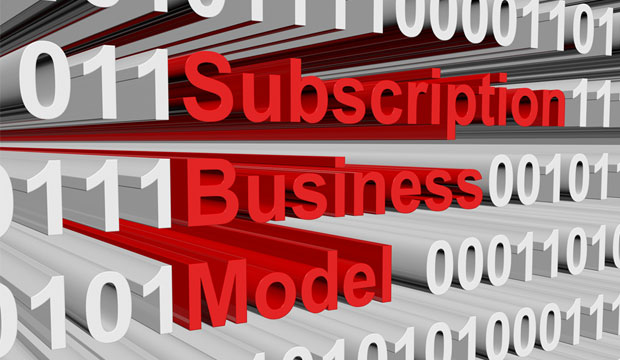The subscription model forms the backbone of the revenue streams of many Software as a Service companies. In fact, more than 90 percent of software providers expected to migrate to a subscription-based business model by 2022, according a Gartner report published last year. Despite the higher rates of adoption, companies often struggle with keeping subscription customers, leading to high churn rates and lost revenue.
“Churn rate” refers to the number of subscribers lost over a specific period of time — or customers that cease doing business with a company. Churn can be voluntary, such as someone choosing to cancel a subscription, or involuntary, due to a subscriber forgetting to update payment information.
No matter how churn increases, it results in lost revenue. While some companies experience “acceptable” churn rates of 5-7 percent, others lose major pieces of revenue by mismanaging subscription models or simply not managing them efficiently.
High churn rates can cost companies thousands — even millions — of dollars per year. For a small or midsize company, churn could prevent a company’s growth, or in some cases contribute to its downsizing.
An analysis of churn studies provides this example based on a low, 5 percent churn rate scenario: If a company with 1,000 customers sees an annual churn rate of 5 percent, that’s a loss of 50 customers per year. If that churn rate were 5 percent per month, that company would lose 460 customers in one year — heavily impacting the company’s overall revenue base.
Managing churn by identifying factors that lead to cancellations or declined payments is crucial for companies to turn unreliable subscription revenue into a model that generates consistent cashflow.
The following five tips suggest ways to address high churn rates, and create stabilized monthly income.
1. Incentivize Prepayments
Offering flexible subscription plans, such as month-to-month options, is great for customers but often can mean unpredictable churn for companies. Encouraging subscribers to pay up front at a discounted rate is a win-win. The customers receive a discount on the service, and the company has guaranteed revenue for the amount of time the subscriber opts to pay. Rather than having a customer who could cancel after 30 days, the company has a contract that’s paid up front.
If a product or service is difficult to discount, companies should consider offering exclusive benefits or a free month to those who prepay. To further reduce churn, companies can invest part of that prepaid income in customer acquisition activities to help offset monthly churners.
2. Automate Dunning
Dunning refers to communicating with subscribers with overdue accounts, in this case to reduce passive churn. A customer may have missed a payment because of an expired credit card, or maybe one that was lost or stolen. That doesn’t mean the subscription cancellation was intentional.
If payment information is not updated due to neglect, that’s involuntary churn. For B2B businesses, 9 percent of monthly recurring credit card transactions fail on average. For B2C businesses, the number is closer to 14 percent.
Customers may still want to use the product, but they might not be aware that their payment method has failed. This is where automating the process of reaching out to customers can save a business significant revenue.
As opposed to calling or emailing these customers manually, which requires costly staff time, companies should set up an automated system that reminds them if a payment has failed or if their account needs updating.
There are several services that can automate dunning, some of which find sending lighthearted reminders to customers a successful way to get back revenue that otherwise would have been lost. Companies should give customers the option in whatever communication is shared to pay immediately through a secure platform.
3. Survey Churners
If a company sees large volumes of voluntary churn, like active unsubscribes, simply asking customers why they chose to leave is a tried-and-true method of gaining valuable insight.
For example, on an unsubscribe or opt-out page of a website, companies can host surveys that gather feedback from customers on their decisions and that data can be used to make educated choices regarding the subscription model moving forward. Should a company see similar response at a high-enough rate, changes can be made to programs to prevent future churn.
Businesses might be hesitant to host surveys for various reasons, but in these cases the customers are already lost, so there isn’t any harm in posing a question before they go.
4. Let Subscribers Skip & Pause
Customers appreciate freedom when it comes to subscription programs. If subscription standards are strict, companies should not be surprised if subscribers opt out or cancel due to unforeseen circumstances, or when a competitor offers a comparable plan that’s more flexible.
Allowing subscribers to pause their subscription, or even skip a month of the program, encourages them to use those options if it really is a break they need. Once a subscriber opts out, getting them back is much more difficult and leads to more revenue lost as opposed to letting them pause their subscription.
The option to pause or skip also provides peace of mind when making a decision to sign up, without the pressure of committing to a certain period of time. Oftentimes customers won’t have the need to skip or pause their subscription, but it provides value that encourages initial sign-ups.
5. Celebrate Loyalty
Everyone wants to feel they are part of something special — that’s where loyalty programs create a huge draw for customers. Companies should create loyalty programs tailored to customers that provide an extra value to those who choose to subscribe. It can be something small, like a one-time gift at sign-up, or something ongoing like a free webinar each month.
It also needs to evolve with the lifetime of the consumer. If the customer’s needs shrink or multiply — say a person travels for a few months and needs to put their subscription on hold or has a growing family and wants to add to their subscription service — the incentive program should also evolve.
Loyalty programs don’t have to serve only the customer, they also can be used by companies to gather insights and make business decisions. To honor loyal customers, Burger King offers 5-cent coffee to customers who use the Burger King app to makes purchases. Although revenue is lost on the initial coffee sale, Burger King requires customers to use the app, which provides the business access to valuable customer data, and in turn boosts sales in other areas.
Members of customer loyalty programs generate between 12 percent and 18 percent more revenue, according to Accenture, meaning longer subscription times and less churn. Proving the value of the program, it is more profitable to keep current subscribers happy than it is to acquire a new customer.
Churn Management Is Key to Success
Subscription programs increase the accessibility of products to broader audiences while creating reliable income and loyal customers, but implementing a churn-management strategy is key to the model’s success.
As subscription models continue to change the economy, companies need to evolve to meet the needs of customers and provide the flexibility they’ve come to expect from providers.
While companies cannot avoid churn, they can avoid high rates. With the right plans in place, revenue streams from programs can become reliable.














































Social Media
See all Social Media